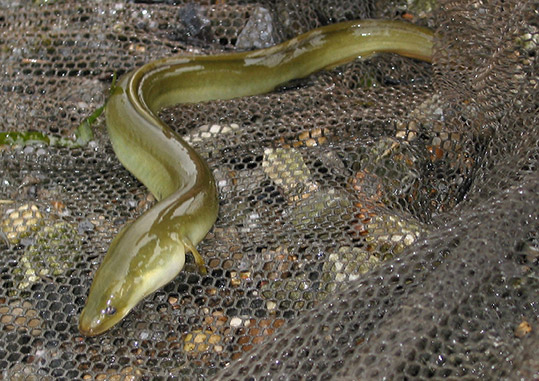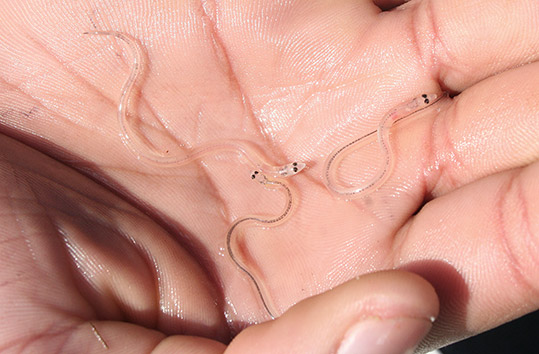American Eel
American eels are catadromous fish, meaning they are born in salt water, migrate to fresh water to live, and return to salt water to spawn. These fish start life in the Sargasso Sea, part of the Atlantic Ocean southeast of Bermuda, and travel on ocean currents to rivers along the East Coast. Young eels enter Hudson as “glass eels” only a few inches long. They are transparent except for their dark eyes and red gills.
Glass eels quickly develop pigment and become small “elvers.” Larger eels living in the Hudson and its tributaries are called “yellow eels.” American eels can live more than twenty years, and reach lengths over three feet. Shortly before they leave the Hudson to return to the Sargasso Sea, their color becomes dark and silvery.
American eels can be found all along the Hudson in both salt and fresh water. They are very hardy fish, tolerant of pollution and able to live out of water longer than most fish. In damp conditions they can travel overland, slithering like a snake.
Eels were once a valuable commercial catch on the Hudson. However, the Hudson’s eels tend to accumulate high concentrations of toxic PCBs – polychlorinated biphenyls. New York State closed the fishery because of the dangers these chemicals pose to those who eat eels. Eels are still caught commercially in other rivers and coastal areas. For reasons scientists don’t fully understand, eel populations have declined over much of their range.


